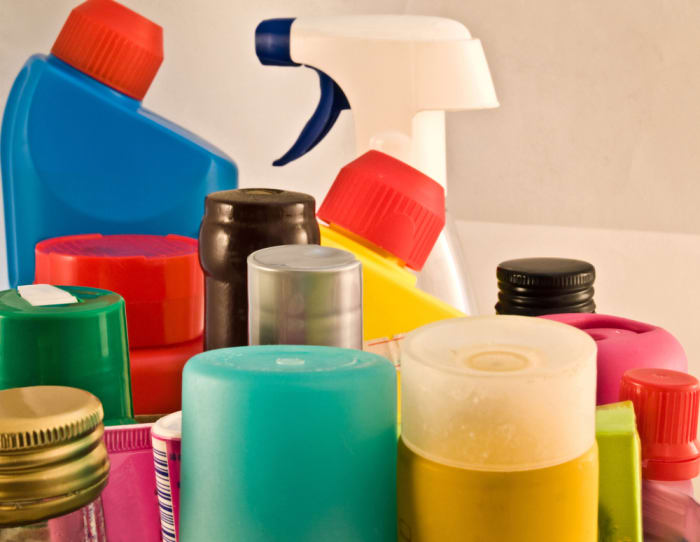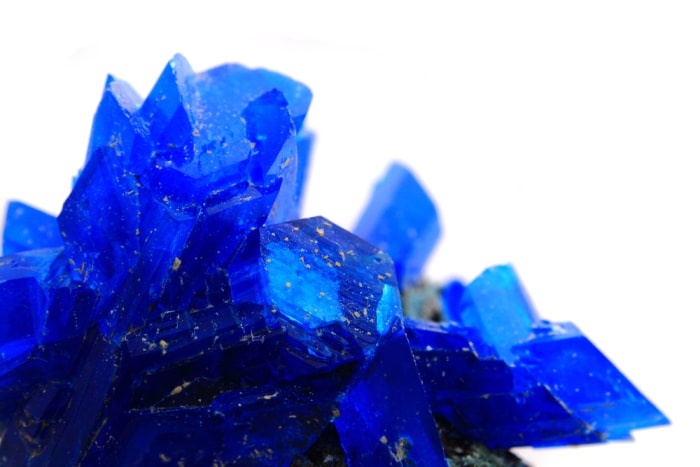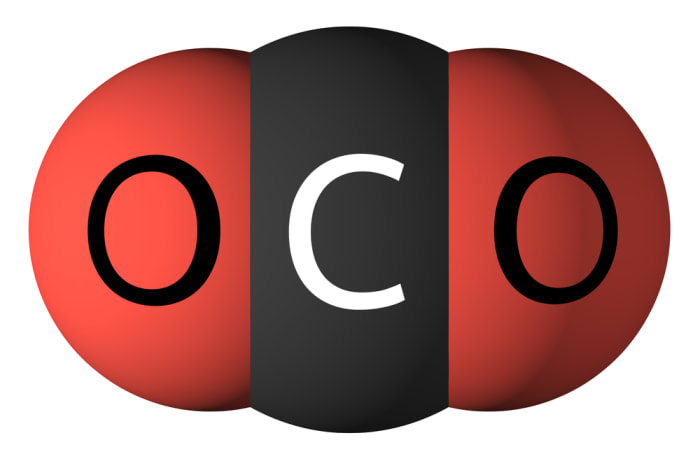The most spectacular household chemicals
Reactions you can learn right now!
The most useful substance in household chemicals, for home chemists, is surface active agents, or SAAs. They significantly reduce the electrostatic tension between particles of substances, breaking up conglomerates into smaller sizes. This feature is used in removing dirt on clothing etc. And on our list of the chemical reactions which you can make with household chemicals, SAAs create impressive effects in experiments.

First experiment: a foaming volcano in a jar
It’s very easy to conduct this interesting experiment at home.
You will need:
- hydroperite (hydrogen peroxide). The higher the concentrate of solution, the more intensive the reaction will be, and the more effective the eruption of the “volcano”. So buy pills at the pharmacy and dissolve them in a small amount of water just before use, in the proportion of 1/1 (the solution will be 50%, an excellent concentration);
- a small amount of dishwashing liquid diluted with water. 50 millimeters will be enough. You can add coloring if you wish. Now you need to do a bit of chemistry to get an effective catalyst — copper ammine. Work with it carefully, adding a few drops of ammonia to copper sulfate until it dissolves completely

Let’s look at the formula:
CuSO₄ + 6NH₃ + 2H₂O = [Cu(NH₃)₄](OH)₂(copper ammine) + (NH₄)₂SO₄
Reaction of the breakdown of peroxide:
2H₂O₂ → 2H₂O + O₂
Making the volcano: mix ammine with the washing solution in a jar or a long-necked flask and quickly add the hydroperite solution. The “eruption” may go up very high into the air, so we recommend you place a container under the experiment.
Second experiment: reaction between acid and sodium salt
The most familiar compound that is present in every home, sodium salt, is kitchen soda. It reacts with acid (to save time, you can use acetic acid or citric acid). As a result a new salt, a little water and carbon dioxide are formed. You can detect that it is being released by the hissing and bubbles in the area of the reaction.

Third experiment: “swimming” soap bubbles
You can use a simple compound: kitchen soda, which is used for cleaning kitchen utensils, removing fat, and for culinary purposes. You will need:
- an aquarium with a wide bottom;
- kitchen soda (150—200 grams);
- acetic acid in a solution of 6—9%;
- soap bubbles (making bubbles yourself is not hard, mix water, dishwashing liquid and glycerin).
Sprinkle salt evenly on the bottom of the aquarium, and pour acetic acid over it. The carbon dioxide that is released is heavier than the air, so it will stay at the bottom of the aquarium. How do we tell that it’s there? Place a lighted match on the bottom, and the carbon dioxide will put it out immediately.
NaHCO₃ + CH₃COOH → CH₃COONa + H₂O + CO₂↑
Blow bubbles into the aquarium. They will slowly move in a horizontal line (the invisible boundary where the carbon dioxide and air touch, as if they were swimming in the aquarium).
Fourth experiment: another variation on the theme of soda and acid.
You will need:
- various types of non-hygroscopic food products (for example gumdrops). Cut them with a sharp knife into strips (1-3 cm);
- a glass with diluted soda (one tablespoon);
- a glass with a solution of acetate or another available acid (apple, citric).
Place the gumdrop pieces in the glass with the soda solution. Leave them there for 10 minutes, then move them to the other glass with the acidic solution.
The gumdrop pieces, like live worms, will form bubbles of carbon dioxide gas and float to the surface, where the bubbles will evaporate, the lifting power of the gas will disappear and the pieces will sink. Bubbles will form again, and the process will continue until the reagents in the container have run out.
Fifth experiment: demonstration of the properties of an alkali on litmus paper
Most washing agents contain caustic soda, the most common alkali. You can prove they are present in the solution of a washing agent with a simple experiment which a young enthusiast can easily prepare at home.
- Take a piece of litmus paper
- Dissolve a little liquid soap in water
- Lower the litmus paper into the soap.
- Wait until the paper turns blue, which will show the alkaline reaction of the solution. Click here for finding more bright reactions between “everyday compounds”.
Sixth experiment: color bursts and patterns in milk
This experiment is based on the properties of interaction of fats and SAA. Fat molecules have a dual structure is dual: they have a hydrophilic end (that interacts and dissociates with water) and a hydrophobic end (the “tail” of a polyatomic compound that is insoluble in water).
- Pour milk into a wide, shallow container (as the “canvas” on which the color burst will be visible). Milk is a suspension of fat molecules in water.
- With a pipette, add several drops of a water-soluble liquid dye into the container of milk. You can make a multi-colored explosion, by adding different dyes to different parts of the container.
- Then soak a cotton swab in the dishwashing liquid and touch the surface of the milk. The white “canvas” of milk turns into a moving palette of colors which form spirals in the liquid, and twist into incredible shapes.
The basis of this phenomenon is the ability of SAAs to break down a film of fat molecules on the surface of a liquid into fragments. Fat molecules, pushing off with their hydrophobic “tails”, shift around within the milk suspension, and the partially undissolved dye moves with them.